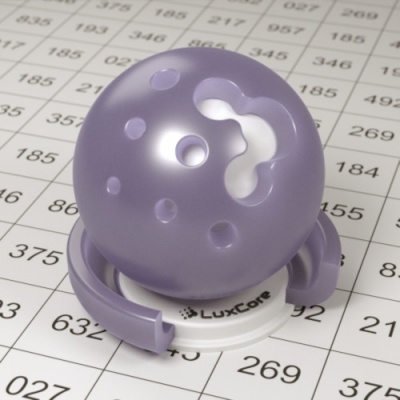Difference between revisions of "LuxCoreRender Materials Mix"
| Line 1: | Line 1: | ||
[[file:luxcore_materials_mix.jpg|400px|thumb|left|A mix of amorphous carbon metal and glossy translucent]] | [[file:luxcore_materials_mix.jpg|400px|thumb|left|A mix of amorphous carbon metal and glossy translucent]] | ||
<br clear="all"/> | <br clear="all"/> | ||
The Mix material is a special material that is used to combine two other materials. Note that it is possible to use one mix material as a component of another mix material. This allows for complex shader combinations | The Mix material is a special material that is used to combine two other materials. Note that it is possible to use one mix material as a component of another mix material. This allows for complex shader combinations. | ||
== Options == | == Options == | ||
| Line 18: | Line 18: | ||
=== Mix Amount === | === Mix Amount === | ||
This specifies how much each component material contributes to the final result. A mix amount of 0 results in only the first component, 1 results in only the second component, everything else is somewhere in between. The mix amount | This specifies how much each component material contributes to the final result. A mix amount of 0 results in only the first component, 1 results in only the second component, everything else is somewhere in between. The mix amount can also be controlled with a float(grey-scale) texture, to allow the blending to be localized. | ||
Note that mixing volumes is not possible. Any volume used by Material 1 or Material 2 will be ignored. The Mix material itself can however have a volume. | |||
Revision as of 09:11, 9 December 2017
The Mix material is a special material that is used to combine two other materials. Note that it is possible to use one mix material as a component of another mix material. This allows for complex shader combinations.
Options
Material 1
Slot to attach the first component material.
Material 2
Slot to attach the second component material.
Mix Amount
This specifies how much each component material contributes to the final result. A mix amount of 0 results in only the first component, 1 results in only the second component, everything else is somewhere in between. The mix amount can also be controlled with a float(grey-scale) texture, to allow the blending to be localized.
Note that mixing volumes is not possible. Any volume used by Material 1 or Material 2 will be ignored. The Mix material itself can however have a volume.
